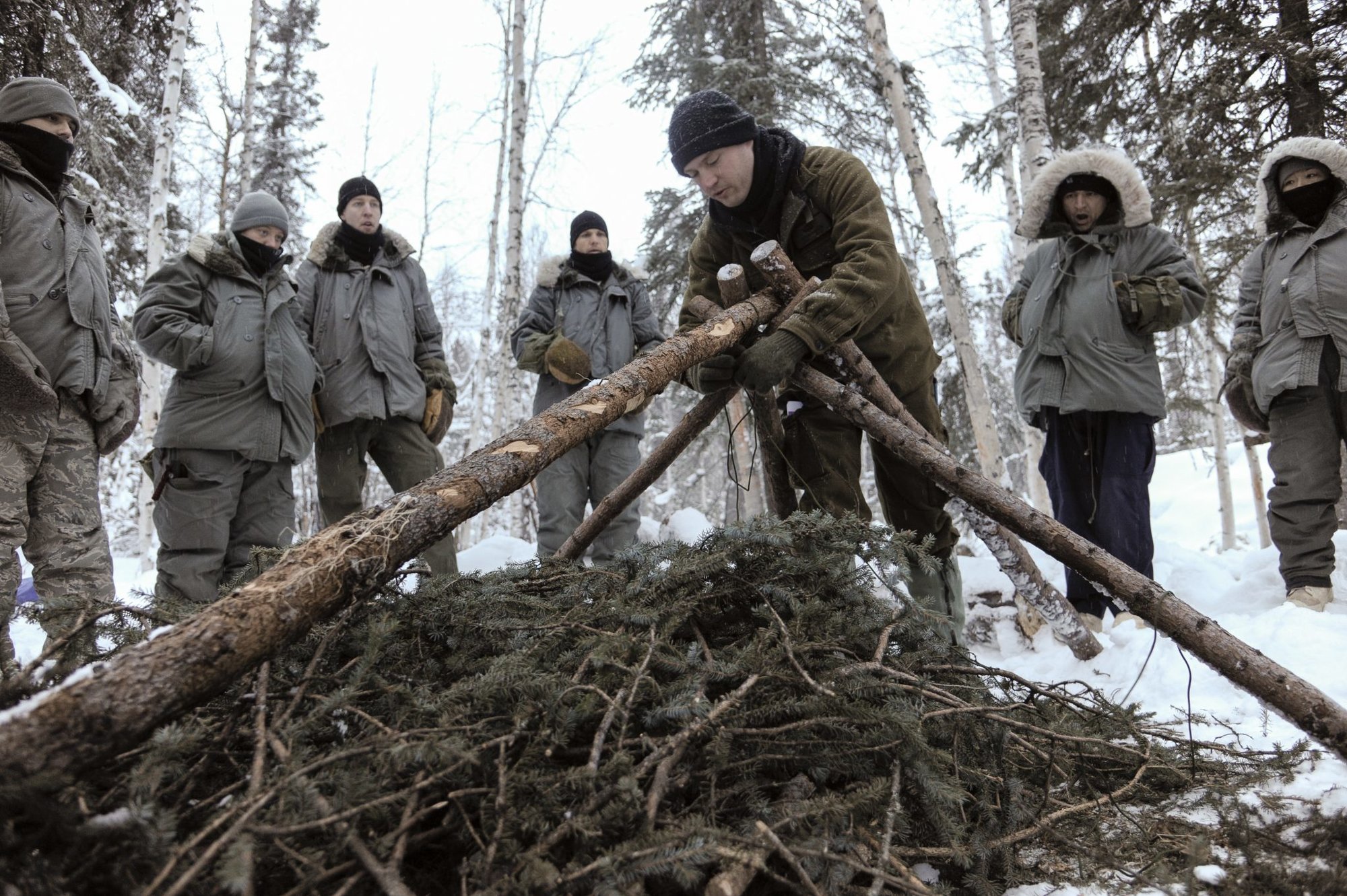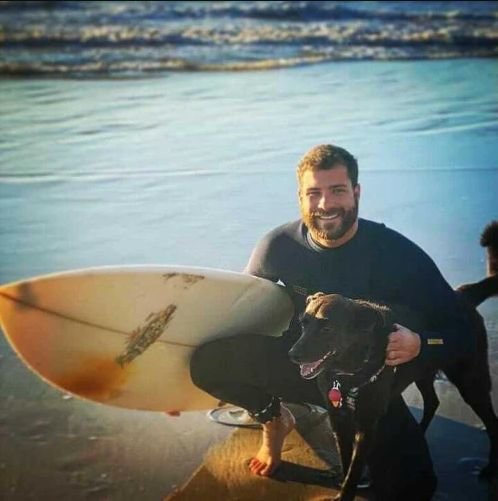The ‘Cool School’ That Trains the Military’s Top Survival Experts

U.S. Air Force Staff Sgt. Justin Carson, Det. 1, 66th Training Squadron Survival Evasion Resistance Escape specialist, demonstrates to U.S. military service members the construction of a thermalized A-frame shelter Feb. 21, 2013, Eielson Air Force Base, Alaska. Carson is tasked with providing arctic survival training to U.S. military and allies from around the globe, including Danish and Australian forces. (U.S. Air Force Photo by Airman 1st Class Peter Reft)
A few times every year, survival specialists from across the military flock to the “Cool School,” where they are indoctrinated in the frigid art of arctic survival.
The Cool School brings together the military’s top Survival, Evasion, Resistance, and Escape (SERE) specialists from across the country.
With temperatures as low as -60 degrees Fahrenheit and winds as high as 50 miles per hour, the Cool School offers one of the toughest environmental conditions that can be found in military courses. But for a good reason. Cool School graduates will go on to teach special operators, pilots, and other high-risk personnel about arctic survival.
The latest iteration of the Barren Land Arctic Survival training course, as the Cool School is officially known, took place in January in Barrow, Alaska.

“It’s the experiential factor that enables Air Force SERE specialists to provide the highest standard of arctic training to the Department of Defense,” U.S. Air Force Master Sergeant Garrett Wright, the 66th Training Squadron’s the Detachment 1 Arctic Survival School superintendent, said in a press release.
You know a course is hardcore when aside from an independent medical duty technician, which is pretty normal for a course, there are two Security Forces airmen on standby for medical emergencies and polar bear guard.

“Our students have a unique opportunity to learn from the indigenous people, so they can come to a better understanding of the cultural influences that enabled them to survive in such a harsh region for thousands of years,” U.S. Air Force Maj. Tyler Williams, the 66th Training Squadron’s Detachment 1 commander.
“Before all of this modern equipment, it was the cultural values and practices that allowed them to thrive in this region. It doesn’t matter if you’ve got the best equipment or aircraft in the world. If you don’t have the right training, the Arctic environment will kill you.”
Lately, the Pentagon has been paying more attention to arctic warfare, and as a result, arctic survival, mainly because of the geopolitical competition that has been taking place around the Arctic Circle, and the natural resources it holds.
This article was originally published Nov. 29 on Sandboxx News. Follow Sandboxx News on Instagram.
READ NEXT:

Dustin Jones is a former senior staff writer for Coffee or Die Magazine covering military and intelligence news. Jones served four years in the Marine Corps with tours to Iraq and Afghanistan. He studied journalism at the University of Colorado and Columbia University. He has worked as a reporter in Southwest Montana and at NPR. A New Hampshire native, Dustin currently resides in Southern California.
BRCC and Bad Moon Print Press team up for an exclusive, limited-edition T-shirt design!
BRCC partners with Team Room Design for an exclusive T-shirt release!
Thirty Seconds Out has partnered with BRCC for an exclusive shirt design invoking the God of Winter.
Lucas O'Hara of Grizzly Forge has teamed up with BRCC for a badass, exclusive Shirt Club T-shirt design featuring his most popular knife and tiomahawk.
Coffee or Die sits down with one of the graphic designers behind Black Rifle Coffee's signature look and vibe.
Biden will award the Medal of Honor to a Vietnam War Army helicopter pilot who risked his life to save a reconnaissance team from almost certain death.
Ever wonder how much Jack Mandaville would f*ck sh*t up if he went back in time? The American Revolution didn't even see him coming.
A nearly 200-year-old West Point time capsule that at first appeared to yield little more than dust contains hidden treasure, the US Military Academy said.












